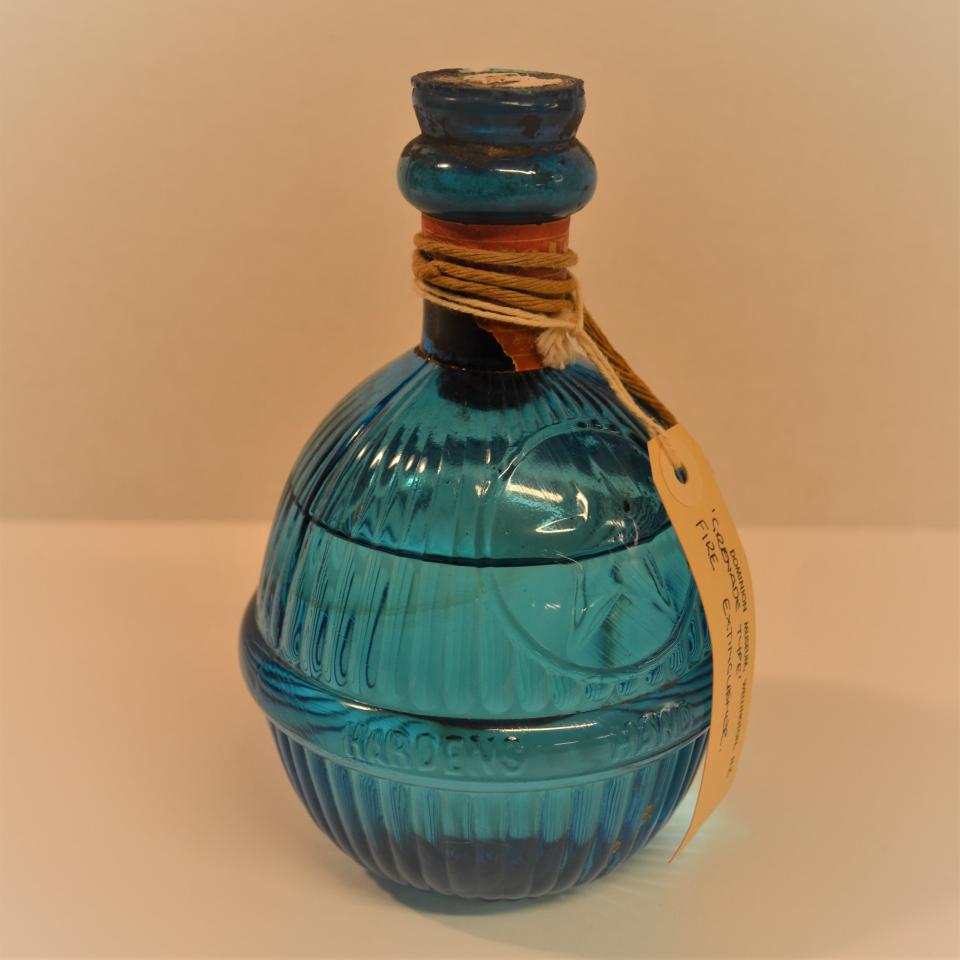This intriguing object is a fine blue glass flask, securely stoppered with a cork and cement plug, with a string carry handle. What could it be?
The words ‘Hardens Hand Grenade Fire Extinguisher’ moulded into the glass at the widest part should give you a clue.
This is an early type of fire extinguisher, made of thin glass so it would shatter easily when thrown at the seat of a fire. These fire extinguishers were made in the U.S.A. from the 1860s to about 1910.
Early versions were filled with salt water (to prevent freezing) but many were filled with chemical solutions, usually carbon tetrachloride, a highly toxic substance. When the liquid was released, the heat converted it to a suffocating gas, stopping combustion. Carbon tetrachloride, when exposed to heat, converts to phosgene gas which was later used as a deadly chemical weapon in World War I. Perhaps not ideal for the family home or the workplace.
Fire extinguisher, United States of America,1860s-1910, glass, carbon tetrachloride, string, printed paper
Grenade Fire Extinguisher, EXTREMELY FRAGILE blue glass bottle containing carbon tetrachloride - a highly TOXIC substance. ‘Hardens Hand Grenade Fire Extinguisher’ is moulded into the glass at the widest part. This is an early type of fire extinguisher, made of thin glass so it would shatter easily when thrown at the seat of a fire. These fire extinguishers were made in the U.S.A. from the 1860s to about 1910. When the liquid was released the heat converted it to a suffocating gas, stopping combustion. Carbon tetrachloride, when exposed to heat, converts to phosgene gas which was later used as a deadly chemical weapon in World War I.
Do you have any more information about the extinguisher? Fill in the form and let us know.
